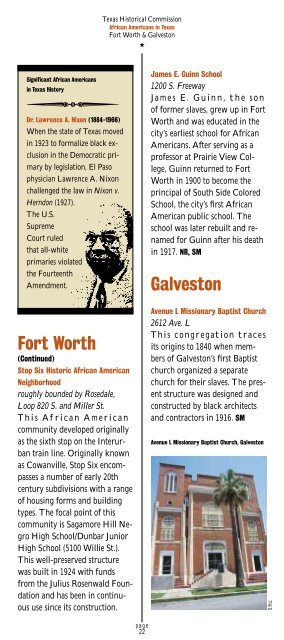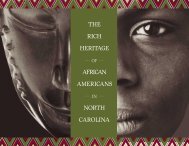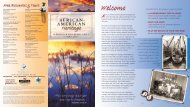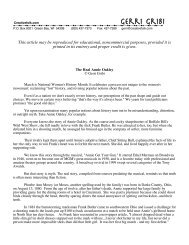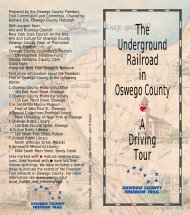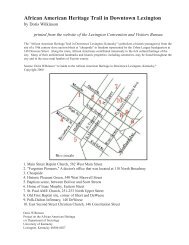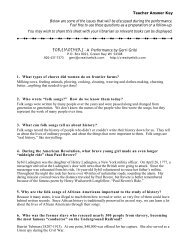African Americans in Texas
African Americans in Texas
African Americans in Texas
Create successful ePaper yourself
Turn your PDF publications into a flip-book with our unique Google optimized e-Paper software.
Significant <strong>African</strong> <strong>Americans</strong><br />
<strong>in</strong> <strong>Texas</strong> HistoryDr. Lawrence A. Nixon (1884-1966)<br />
When the state of <strong>Texas</strong> moved<br />
<strong>in</strong> 1923 to formalize black exclusion<br />
<strong>in</strong> the Democratic primary<br />
by legislation, El Paso<br />
physician Lawrence A. Nixon<br />
challenged the law <strong>in</strong> Nixon v.<br />
Herndon (1927).<br />
The U.S.<br />
Supreme<br />
Court ruled<br />
that all-white<br />
primaries violated<br />
the Fourteenth<br />
Amendment.<br />
Fort Worth<br />
(Cont<strong>in</strong>ued)<br />
Stop Six Historic <strong>African</strong> American<br />
Neighborhood<br />
roughly bounded by Rosedale,<br />
Loop 820 S. and Miller St.<br />
This <strong>African</strong> American<br />
community developed orig<strong>in</strong>ally<br />
as the sixth stop on the Interurban<br />
tra<strong>in</strong> l<strong>in</strong>e. Orig<strong>in</strong>ally known<br />
as Cowanville, Stop Six encompasses<br />
a number of early 20th<br />
century subdivisions with a range<br />
of hous<strong>in</strong>g forms and build<strong>in</strong>g<br />
types. The focal po<strong>in</strong>t of this<br />
community is Sagamore Hill Negro<br />
High School/Dunbar Junior<br />
High School (5100 Willie St.).<br />
This well-preserved structure<br />
was built <strong>in</strong> 1924 with funds<br />
from the Julius Rosenwald Foundation<br />
and has been <strong>in</strong> cont<strong>in</strong>uous<br />
use s<strong>in</strong>ce its construction.<br />
<strong>Texas</strong> Historical Commission<br />
<strong>African</strong> <strong>Americans</strong> <strong>in</strong> <strong>Texas</strong><br />
Fort Worth & Galveston<br />
★<br />
page<br />
22<br />
James E. Gu<strong>in</strong>n School<br />
1200 S. Freeway<br />
James E. Gu<strong>in</strong>n, the son<br />
of former slaves, grew up <strong>in</strong> Fort<br />
Worth and was educated <strong>in</strong> the<br />
city’s earliest school for <strong>African</strong><br />
<strong>Americans</strong>. After serv<strong>in</strong>g as a<br />
professor at Prairie View College,<br />
Gu<strong>in</strong>n returned to Fort<br />
Worth <strong>in</strong> 1900 to become the<br />
pr<strong>in</strong>cipal of South Side Colored<br />
School, the city’s first <strong>African</strong><br />
American public school. The<br />
school was later rebuilt and renamed<br />
for Gu<strong>in</strong>n after his death<br />
<strong>in</strong> 1917. NR, SM<br />
Galveston<br />
Avenue L Missionary Baptist Church<br />
2612 Ave. L<br />
This congregation traces<br />
its orig<strong>in</strong>s to 1840 when members<br />
of Galveston’s first Baptist<br />
church organized a separate<br />
church for their slaves. The present<br />
structure was designed and<br />
constructed by black architects<br />
and contractors <strong>in</strong> 1916. SM<br />
Avenue L Missionary Baptist Church, Galveston<br />
thc


